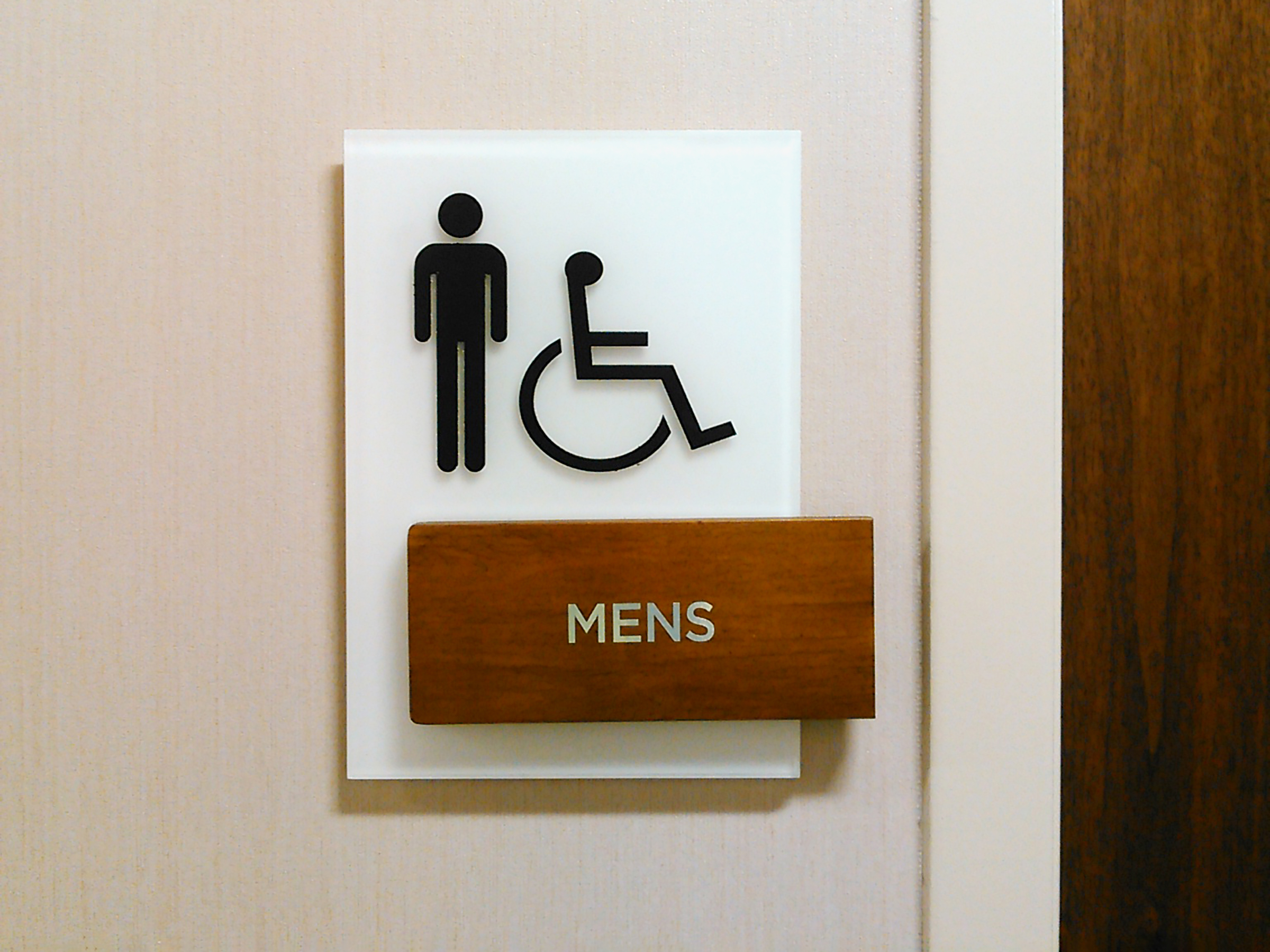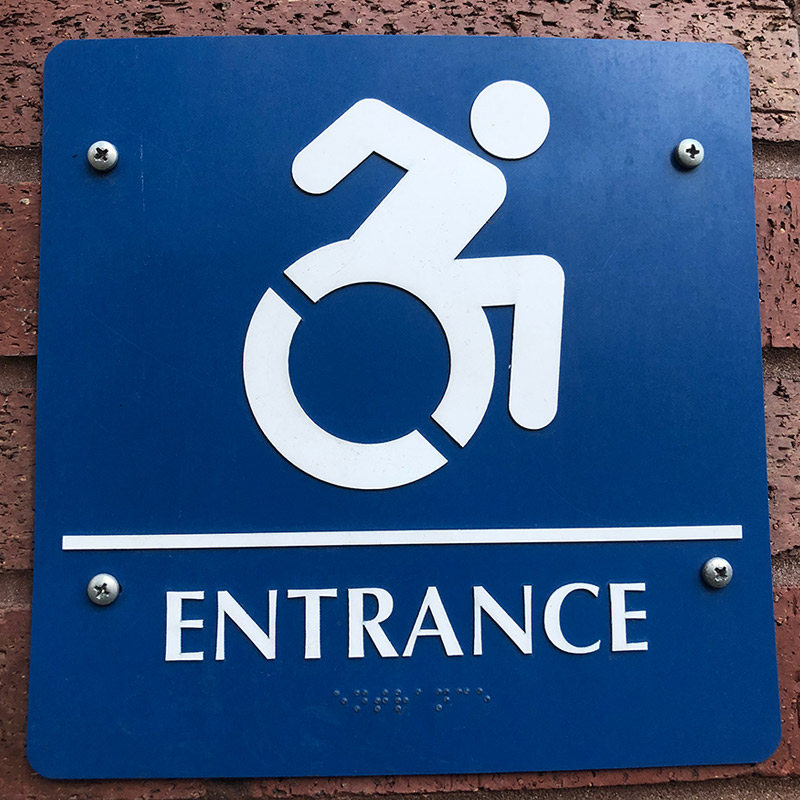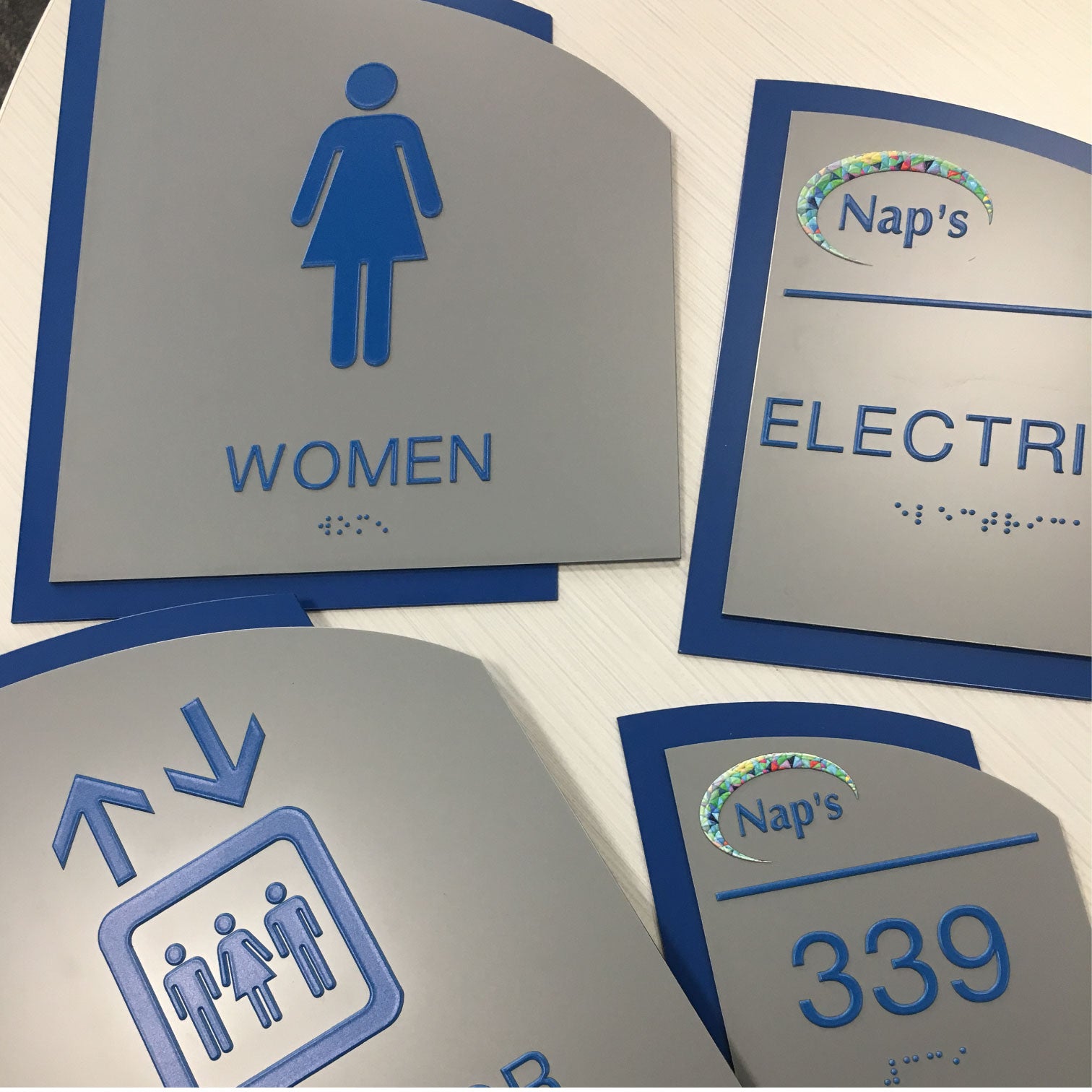Discover the Importance of ADA Signs in Public Spaces
Discover the Importance of ADA Signs in Public Spaces
Blog Article
Checking Out the Trick Attributes of ADA Signs for Enhanced Accessibility
In the realm of ease of access, ADA indicators offer as silent yet powerful allies, guaranteeing that areas are inclusive and accessible for people with handicaps. By incorporating Braille and responsive components, these indicators damage obstacles for the aesthetically impaired, while high-contrast shade plans and understandable typefaces cater to diverse aesthetic needs.
Value of ADA Compliance
Ensuring conformity with the Americans with Disabilities Act (ADA) is important for promoting inclusivity and equal gain access to in public spaces and workplaces. The ADA, passed in 1990, mandates that all public facilities, companies, and transport solutions suit individuals with impairments, guaranteeing they enjoy the same legal rights and opportunities as others. Conformity with ADA criteria not just meets legal obligations yet likewise improves a company's credibility by showing its commitment to variety and inclusivity.
Among the key aspects of ADA conformity is the application of available signs. ADA indications are created to ensure that individuals with impairments can quickly navigate with structures and spaces. These indications should stick to particular guidelines regarding size, font style, shade contrast, and placement to guarantee presence and readability for all. Appropriately applied ADA signage assists get rid of barriers that individuals with specials needs usually come across, thereby advertising their freedom and confidence (ADA Signs).
In addition, sticking to ADA policies can minimize the danger of lawful consequences and prospective penalties. Organizations that fall short to adhere to ADA guidelines might encounter claims or fines, which can be both harmful and economically difficult to their public photo. Therefore, ADA conformity is integral to fostering a fair atmosphere for everyone.
Braille and Tactile Elements
The incorporation of Braille and tactile aspects into ADA signs personifies the principles of access and inclusivity. It is generally placed underneath the equivalent message on signage to guarantee that people can access the information without aesthetic support.
Responsive elements extend beyond Braille and include elevated personalities and icons. These components are designed to be discernible by touch, enabling people to determine space numbers, bathrooms, exits, and various other crucial locations. The ADA establishes specific guidelines pertaining to the size, spacing, and placement of these tactile aspects to maximize readability and guarantee consistency across different settings.

High-Contrast Color Systems
High-contrast color pattern play a pivotal function in improving the presence and readability of ADA signage for people with aesthetic impairments. These systems are crucial as they optimize the difference in light reflectance in between text and history, ensuring that indications are quickly discernible, even from a range. The Americans with Disabilities Act (ADA) mandates using details shade contrasts to accommodate those with limited vision, making it an important element of conformity.
The efficiency of high-contrast shades lies in their capacity to stick out in different lighting problems, consisting of dimly lit environments and locations with glare. Generally, dark text on a light background or light message on a dark history is utilized to achieve optimum comparison. For example, black text on a yellow or white history gives a raw visual distinction that assists in fast acknowledgment and comprehension.

Legible Fonts and Text Dimension
When taking into consideration the style of ADA signage, the choice of readable typefaces and suitable text dimension can not be overstated. These elements are critical for ensuring that signs come to individuals with aesthetic problems. The Americans with Disabilities Act (ADA) mandates that font styles must be not italic and sans-serif, oblique, script, extremely decorative, or of uncommon kind. These needs assist guarantee that the message is conveniently legible from a distance and that the personalities are appreciable to varied audiences.
The dimension of the text also plays a critical role in hop over to here ease of access. According to ADA standards, the minimum message height should be 5/8 inch, and it needs about his to raise proportionally with viewing distance. This is especially essential in public spaces where signage demands to be checked out quickly and properly. Consistency in message size adds to a natural visual experience, assisting people in browsing environments successfully.
In addition, spacing between letters and lines is indispensable to clarity. Adequate spacing stops characters from appearing crowded, boosting readability. By sticking to these requirements, developers can significantly enhance ease of access, ensuring that signage offers its desired objective for all people, regardless of their aesthetic capabilities.
Effective Placement Strategies
Strategic placement of ADA signs is important for making best use of accessibility and guaranteeing conformity with legal criteria. Appropriately located indications lead people with impairments effectively, promoting navigating in public spaces. Trick considerations consist of elevation, closeness, and exposure. ADA guidelines stipulate that signs should be placed at an elevation between 48 to 60 inches from the ground to guarantee they are within the line of sight for both standing and seated people. This common elevation range is essential for inclusivity, allowing wheelchair customers and individuals of varying elevations to access details effortlessly.
Furthermore, signs should be placed nearby to the latch side of doors to allow simple recognition prior to access. Consistency in indicator placement throughout a center enhances predictability, lowering confusion and boosting general customer experience.

Final Thought
ADA indications play a crucial function in promoting accessibility by incorporating attributes that resolve the demands of people with specials needs. These aspects collectively foster an inclusive environment, emphasizing the relevance of ADA conformity in making sure equivalent gain access to for all.
In the realm of ease of access, ADA signs offer as quiet yet powerful allies, making sure that rooms are inclusive and accessible for people with impairments. The ADA, enacted in 1990, mandates that all public centers, employers, and transportation solutions accommodate people with disabilities, guaranteeing they take pleasure in the exact same rights and possibilities as others. ADA Signs. ADA indications are created to guarantee that individuals with handicaps can quickly navigate with rooms and structures. ADA guidelines state that signs need to be installed at an elevation between 48 to 60 inches from the ground to ensure they are within the line of sight for both standing and seated individuals.ADA indicators play a crucial role in advertising ease of access by incorporating attributes that address the requirements of individuals with specials needs
Report this page